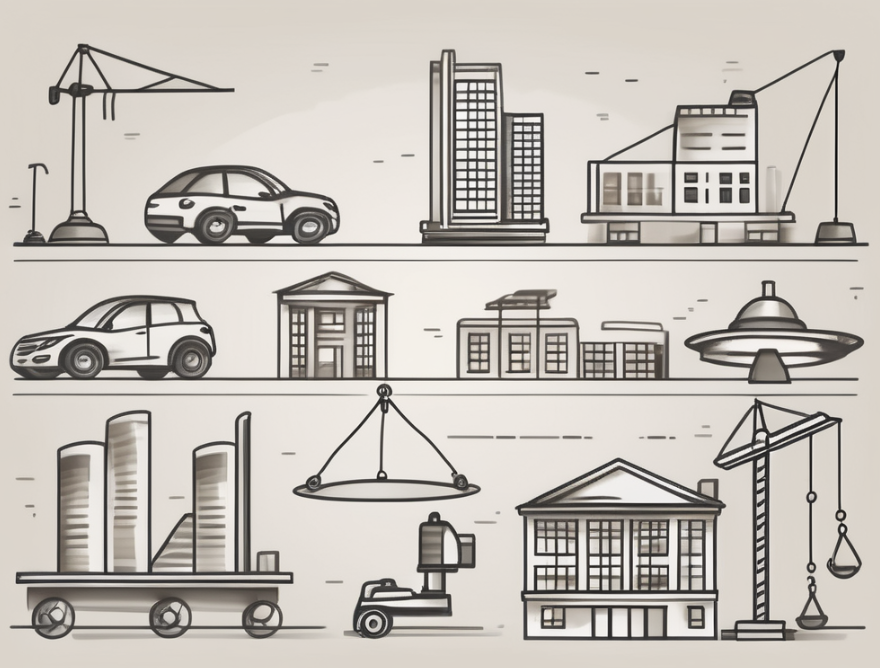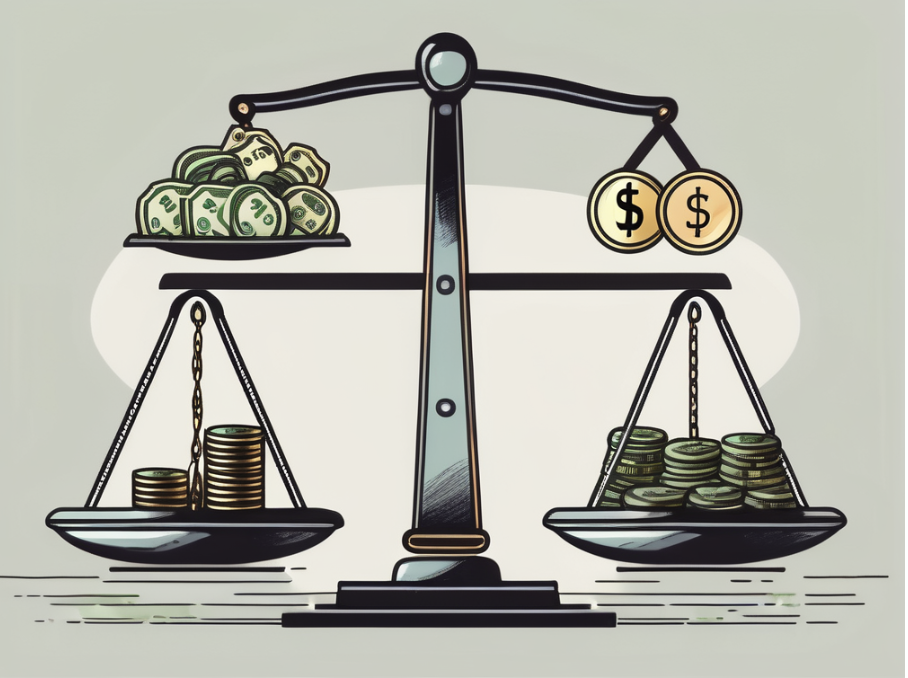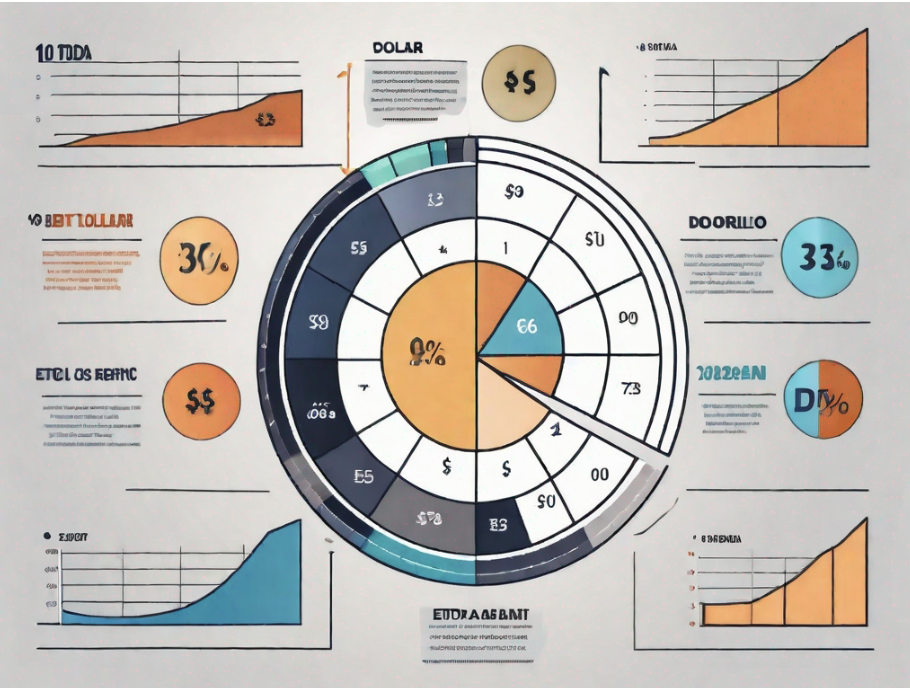A Comprehensive Guide to Lease Accounting: Everything You Need to Know
Unravel the complexities of lease accounting with this comprehensive guide that covers everything you need to know.

Tips
The Accounting Detective
In the world of finance and accounting, lease accounting is a crucial aspect that every business must understand and comply with. It provides valuable information about a company’s financial obligations and helps stakeholders make informed decisions. This comprehensive guide will take you through everything you need to know about lease accounting, from its definition and importance to the challenges faced and future trends in this field.
Understanding Lease Accounting
Definition and Importance of Lease Accounting
Lease accounting refers to the process of recording and reporting lease-related transactions in a company’s financial statements. It is important because leases can have a significant impact on a company’s financial performance and position. By accurately accounting for leases, businesses can provide transparent and reliable financial information to investors, lenders, and other stakeholders.
Lease accounting plays a crucial role in reflecting a company’s financial health and obligations. It helps in assessing the leverage and liquidity of a business, as lease liabilities can affect key financial ratios and debt covenants. Furthermore, with the implementation of new lease accounting standards such as ASC 842 and IFRS 16, companies are required to recognize most leases on their balance sheets, increasing transparency and comparability in financial reporting.
Key Principles of Lease Accounting
The key principles of lease accounting are outlined in the International Financial Reporting Standards (IFRS) and the Generally Accepted Accounting Principles (GAAP). These principles ensure consistent and comparable reporting across different industries and countries. The main principles include lease identification, lease classification, and recognition and measurement of lease liabilities.
Lease identification involves determining whether an arrangement contains a lease or not, based on the control and economic benefits derived from the use of an underlying asset. Lease classification distinguishes between finance leases and operating leases, impacting the recognition pattern of lease expenses and liabilities. Recognition and measurement of lease liabilities require companies to calculate the present value of lease payments and record corresponding lease assets and liabilities on the balance sheet, providing a more accurate representation of a company’s financial position.
Types of Lease Accounting
Operating Leases
An operating lease is a type of lease where the lessor (owner of the asset) allows the lessee (the company leasing the asset) to use the asset for a specific period without transferring ownership. Operating leases are generally shorter in duration and do not result in the lessee recognizing the leased asset or liability on their balance sheet.
Operating leases are commonly used for assets that have a shorter useful life or are subject to rapid technological advancements. Companies often opt for operating leases for equipment or machinery that they only need for a limited period to avoid the financial burden of ownership. This type of lease provides flexibility to the lessee, allowing them to use the asset without a significant long-term commitment.
Finance Leases
A finance lease, also known as a capital lease, is a lease that transfers substantially all the risks and rewards incidental to ownership of an asset to the lessee. In finance leases, the lessee recognizes both the leased asset and liability on their balance sheet, reflecting the economic substance of an ownership arrangement.
Finance leases are often used for high-value assets with a long useful life, such as real estate or expensive machinery. By recognizing the leased asset and liability on their balance sheet, the lessee reflects a long-term commitment similar to ownership. This type of lease is beneficial for companies that require the asset for an extended period and intend to use it as if they were the owner.
Steps in Lease Accounting
Identifying a Lease
The first step in lease accounting is identifying whether an arrangement contains a lease. This involves determining whether the arrangement gives the lessee the right to control the use of an identified asset for a defined period.
It is crucial to understand that not all agreements that involve the use of an asset are considered leases for accounting purposes. The key factor in identifying a lease is the presence of the right to control the use of the asset. This means that the lessee has the ability to direct the use of the asset and obtain its benefits throughout the lease term.
Determining Lease Classification
Once a lease is identified, the next step is to determine its classification as either an operating lease or a finance lease. This determination is based on the extent to which the lease transfers the risks and rewards of ownership to the lessee.
Operating leases are characterized by transferring less risks and rewards to the lessee compared to finance leases. In an operating lease, the lessor retains most of the risks and rewards associated with ownership, while in a finance lease, the lessee essentially assumes the risks and rewards of ownership, resembling a purchase of the asset.
Recognizing and Measuring Lease Liabilities
After classifying the lease, the lessee must recognize and measure lease liabilities. This involves estimating the present value of lease payments and accounting for any initial direct costs, incentives, or lease modifications that affect the lease liability.
Recognizing and measuring lease liabilities accurately is essential for financial reporting purposes. The present value of lease payments is calculated using the incremental borrowing rate, which reflects the rate the lessee would have to pay to borrow funds to purchase the asset. Any initial direct costs incurred in obtaining the lease, incentives received from the lessor, and modifications to the lease terms must also be factored into the calculation of lease liabilities.
Impact of Lease Accounting on Financial Statements
Lease accounting standards have brought about significant changes in the way companies report their financial information. One of the key areas affected by these standards is the balance sheet. In the past, operating leases were kept off the lessee’s balance sheet, leading to a potential understatement of their financial obligations. However, with the introduction of lease accounting standards like IFRS 16 and ASC 842, companies are now required to include lease assets and liabilities on their balance sheets. This adjustment offers stakeholders a clearer and more comprehensive view of a company’s financial position, ensuring greater transparency and accountability.
Effect on Balance Sheet
By recognizing lease assets and liabilities on the balance sheet, companies are providing a more accurate reflection of their financial health. This change not only impacts the reported assets and liabilities but also influences key financial ratios and metrics used by investors and analysts to assess a company’s performance and stability. It is essential for stakeholders to understand the implications of these changes to make informed decisions regarding investment and risk management.
Influence on Income Statement
Aside from the balance sheet, lease accounting standards also have a significant influence on a company’s income statement. Previously, operating lease expenses were treated as operating expenses, affecting the company’s bottom line. With the implementation of the new standards, these expenses are now replaced by depreciation and interest expenses, leading to a restructuring of the income statement. This alteration in the presentation of expenses can impact how investors interpret a company’s profitability and operational efficiency, highlighting the importance of clear communication and education on these changes.
Lease Accounting Standards
IFRS 16 Leases
IFRS 16 Leases is the international accounting standard that governs lease accounting for companies reporting under IFRS. Implemented in January 2019, IFRS 16 requires lessees to recognize lease assets and liabilities on their balance sheets for nearly all leases longer than 12 months.
Under IFRS 16, lessees must distinguish between two types of leases: finance leases and operating leases. Finance leases are recognized on the balance sheet as assets and liabilities, while operating leases are disclosed in the notes to the financial statements. This distinction is crucial as it impacts the financial metrics and ratios of a company, affecting how investors and stakeholders perceive its financial health.
ASC 842 Leases
ASC 842 Leases is the lease accounting standard issued by the Financial Accounting Standards Board (FASB) for companies reporting under US GAAP. Similar to IFRS 16, ASC 842 brings most leases onto the balance sheet and requires additional disclosure and presentation in the financial statements.
ASC 842 introduces the concept of right-of-use assets and lease liabilities, which represent the lessee’s right to use an underlying asset and the obligation to make lease payments, respectively. This change aims to provide a more faithful representation of a company’s leasing activities and their impact on its financial position. Additionally, ASC 842 includes specific guidance on lease classification, lease term determination, and discount rate selection, all of which are essential in accurately reflecting the economics of lease transactions.
Challenges in Lease Accounting
Complexity in Lease Identification
Identifying whether an arrangement contains a lease can be challenging, especially in complex arrangements involving multiple components or service agreements. Companies need to establish clear guidelines and processes to accurately determine if a lease exists.
Lease identification is further complicated by the evolving nature of business arrangements, such as cloud computing services or build-to-suit lease agreements. In these cases, the line between a service agreement and a lease can become blurred, requiring a nuanced understanding of the specific terms and economic substance of the arrangement.
Difficulty in Lease Classification
Determining the appropriate lease classification requires a thorough assessment of the terms and conditions of the lease agreement. It may involve complex calculations and judgment calls, especially in cases where risks and rewards are not explicitly specified.
Lease classification can also be influenced by factors such as lease incentives, variable lease payments, and residual value guarantees. These elements introduce additional layers of complexity, as they require careful consideration and interpretation to ensure compliance with accounting standards.
Overcoming Lease Accounting Challenges
Lease accounting can be a complex and time-consuming process for many businesses. From identifying leases to classifying them correctly and measuring their impact on financial statements, there are numerous challenges that organizations face. To address these challenges effectively, companies can explore various strategies and solutions.
Implementing Lease Accounting Software
To streamline lease accounting processes, companies can consider implementing lease accounting software. These software solutions automate lease identification, classification, and measurement, reducing manual errors and improving efficiency. By centralizing lease data and providing real-time insights, these tools enable organizations to stay compliant with accounting standards and make informed decisions regarding their lease portfolio.
Engaging Lease Accounting Experts
Due to the complexities involved in lease accounting, many companies choose to engage lease accounting experts. These professionals have in-depth knowledge of lease accounting standards and can provide guidance and support in ensuring compliance and accurate reporting. By leveraging their expertise, organizations can navigate complex lease agreements, assess their financial impact, and optimize lease terms to align with business objectives.
Furthermore, lease accounting experts can assist companies in conducting lease audits, identifying potential risks and opportunities for cost savings. Their insights can help businesses enhance transparency in financial reporting and establish robust internal controls to mitigate compliance risks. By collaborating with experienced professionals, organizations can enhance their lease accounting practices and drive operational efficiency.
Future Trends in Lease Accounting
Technological Advancements
Advancements in technology, such as artificial intelligence and machine learning, are expected to revolutionize lease accounting. Automated systems and intelligent algorithms can enhance lease management and facilitate real-time reporting.
Furthermore, the integration of blockchain technology is poised to bring about significant changes in lease accounting processes. Blockchain’s decentralized and secure nature can streamline lease agreements, reduce the risk of fraud, and provide a tamper-proof record of lease transactions.
Regulatory Changes
Lease accounting standards and regulations are continuously evolving. Companies should stay updated with any new pronouncements or amendments to ensure compliance with the latest requirements, enabling them to adapt to changing business environments.
Moreover, the increasing focus on sustainability and environmental impact is influencing lease accounting practices. Companies are now required to consider the carbon footprint of leased assets, leading to a shift towards environmentally friendly leasing options and the incorporation of sustainability metrics in lease agreements.
As lease accounting continues to play a crucial role in financial reporting, it is important for businesses to understand and adhere to the relevant standards. By implementing effective lease accounting practices, companies can enhance transparency, improve decision-making, and maintain the confidence of stakeholders in their financial statements.
In the world of finance and accounting, lease accounting is a crucial aspect that every business must understand and comply with. It provides valuable information about a company’s financial obligations and helps stakeholders make informed decisions. This comprehensive guide will take you through everything you need to know about lease accounting, from its definition and importance to the challenges faced and future trends in this field.
Understanding Lease Accounting
Definition and Importance of Lease Accounting
Lease accounting refers to the process of recording and reporting lease-related transactions in a company’s financial statements. It is important because leases can have a significant impact on a company’s financial performance and position. By accurately accounting for leases, businesses can provide transparent and reliable financial information to investors, lenders, and other stakeholders.
Lease accounting plays a crucial role in reflecting a company’s financial health and obligations. It helps in assessing the leverage and liquidity of a business, as lease liabilities can affect key financial ratios and debt covenants. Furthermore, with the implementation of new lease accounting standards such as ASC 842 and IFRS 16, companies are required to recognize most leases on their balance sheets, increasing transparency and comparability in financial reporting.
Key Principles of Lease Accounting
The key principles of lease accounting are outlined in the International Financial Reporting Standards (IFRS) and the Generally Accepted Accounting Principles (GAAP). These principles ensure consistent and comparable reporting across different industries and countries. The main principles include lease identification, lease classification, and recognition and measurement of lease liabilities.
Lease identification involves determining whether an arrangement contains a lease or not, based on the control and economic benefits derived from the use of an underlying asset. Lease classification distinguishes between finance leases and operating leases, impacting the recognition pattern of lease expenses and liabilities. Recognition and measurement of lease liabilities require companies to calculate the present value of lease payments and record corresponding lease assets and liabilities on the balance sheet, providing a more accurate representation of a company’s financial position.
Types of Lease Accounting
Operating Leases
An operating lease is a type of lease where the lessor (owner of the asset) allows the lessee (the company leasing the asset) to use the asset for a specific period without transferring ownership. Operating leases are generally shorter in duration and do not result in the lessee recognizing the leased asset or liability on their balance sheet.
Operating leases are commonly used for assets that have a shorter useful life or are subject to rapid technological advancements. Companies often opt for operating leases for equipment or machinery that they only need for a limited period to avoid the financial burden of ownership. This type of lease provides flexibility to the lessee, allowing them to use the asset without a significant long-term commitment.
Finance Leases
A finance lease, also known as a capital lease, is a lease that transfers substantially all the risks and rewards incidental to ownership of an asset to the lessee. In finance leases, the lessee recognizes both the leased asset and liability on their balance sheet, reflecting the economic substance of an ownership arrangement.
Finance leases are often used for high-value assets with a long useful life, such as real estate or expensive machinery. By recognizing the leased asset and liability on their balance sheet, the lessee reflects a long-term commitment similar to ownership. This type of lease is beneficial for companies that require the asset for an extended period and intend to use it as if they were the owner.
Steps in Lease Accounting
Identifying a Lease
The first step in lease accounting is identifying whether an arrangement contains a lease. This involves determining whether the arrangement gives the lessee the right to control the use of an identified asset for a defined period.
It is crucial to understand that not all agreements that involve the use of an asset are considered leases for accounting purposes. The key factor in identifying a lease is the presence of the right to control the use of the asset. This means that the lessee has the ability to direct the use of the asset and obtain its benefits throughout the lease term.
Determining Lease Classification
Once a lease is identified, the next step is to determine its classification as either an operating lease or a finance lease. This determination is based on the extent to which the lease transfers the risks and rewards of ownership to the lessee.
Operating leases are characterized by transferring less risks and rewards to the lessee compared to finance leases. In an operating lease, the lessor retains most of the risks and rewards associated with ownership, while in a finance lease, the lessee essentially assumes the risks and rewards of ownership, resembling a purchase of the asset.
Recognizing and Measuring Lease Liabilities
After classifying the lease, the lessee must recognize and measure lease liabilities. This involves estimating the present value of lease payments and accounting for any initial direct costs, incentives, or lease modifications that affect the lease liability.
Recognizing and measuring lease liabilities accurately is essential for financial reporting purposes. The present value of lease payments is calculated using the incremental borrowing rate, which reflects the rate the lessee would have to pay to borrow funds to purchase the asset. Any initial direct costs incurred in obtaining the lease, incentives received from the lessor, and modifications to the lease terms must also be factored into the calculation of lease liabilities.
Impact of Lease Accounting on Financial Statements
Lease accounting standards have brought about significant changes in the way companies report their financial information. One of the key areas affected by these standards is the balance sheet. In the past, operating leases were kept off the lessee’s balance sheet, leading to a potential understatement of their financial obligations. However, with the introduction of lease accounting standards like IFRS 16 and ASC 842, companies are now required to include lease assets and liabilities on their balance sheets. This adjustment offers stakeholders a clearer and more comprehensive view of a company’s financial position, ensuring greater transparency and accountability.
Effect on Balance Sheet
By recognizing lease assets and liabilities on the balance sheet, companies are providing a more accurate reflection of their financial health. This change not only impacts the reported assets and liabilities but also influences key financial ratios and metrics used by investors and analysts to assess a company’s performance and stability. It is essential for stakeholders to understand the implications of these changes to make informed decisions regarding investment and risk management.
Influence on Income Statement
Aside from the balance sheet, lease accounting standards also have a significant influence on a company’s income statement. Previously, operating lease expenses were treated as operating expenses, affecting the company’s bottom line. With the implementation of the new standards, these expenses are now replaced by depreciation and interest expenses, leading to a restructuring of the income statement. This alteration in the presentation of expenses can impact how investors interpret a company’s profitability and operational efficiency, highlighting the importance of clear communication and education on these changes.
Lease Accounting Standards
IFRS 16 Leases
IFRS 16 Leases is the international accounting standard that governs lease accounting for companies reporting under IFRS. Implemented in January 2019, IFRS 16 requires lessees to recognize lease assets and liabilities on their balance sheets for nearly all leases longer than 12 months.
Under IFRS 16, lessees must distinguish between two types of leases: finance leases and operating leases. Finance leases are recognized on the balance sheet as assets and liabilities, while operating leases are disclosed in the notes to the financial statements. This distinction is crucial as it impacts the financial metrics and ratios of a company, affecting how investors and stakeholders perceive its financial health.
ASC 842 Leases
ASC 842 Leases is the lease accounting standard issued by the Financial Accounting Standards Board (FASB) for companies reporting under US GAAP. Similar to IFRS 16, ASC 842 brings most leases onto the balance sheet and requires additional disclosure and presentation in the financial statements.
ASC 842 introduces the concept of right-of-use assets and lease liabilities, which represent the lessee’s right to use an underlying asset and the obligation to make lease payments, respectively. This change aims to provide a more faithful representation of a company’s leasing activities and their impact on its financial position. Additionally, ASC 842 includes specific guidance on lease classification, lease term determination, and discount rate selection, all of which are essential in accurately reflecting the economics of lease transactions.
Challenges in Lease Accounting
Complexity in Lease Identification
Identifying whether an arrangement contains a lease can be challenging, especially in complex arrangements involving multiple components or service agreements. Companies need to establish clear guidelines and processes to accurately determine if a lease exists.
Lease identification is further complicated by the evolving nature of business arrangements, such as cloud computing services or build-to-suit lease agreements. In these cases, the line between a service agreement and a lease can become blurred, requiring a nuanced understanding of the specific terms and economic substance of the arrangement.
Difficulty in Lease Classification
Determining the appropriate lease classification requires a thorough assessment of the terms and conditions of the lease agreement. It may involve complex calculations and judgment calls, especially in cases where risks and rewards are not explicitly specified.
Lease classification can also be influenced by factors such as lease incentives, variable lease payments, and residual value guarantees. These elements introduce additional layers of complexity, as they require careful consideration and interpretation to ensure compliance with accounting standards.
Overcoming Lease Accounting Challenges
Lease accounting can be a complex and time-consuming process for many businesses. From identifying leases to classifying them correctly and measuring their impact on financial statements, there are numerous challenges that organizations face. To address these challenges effectively, companies can explore various strategies and solutions.
Implementing Lease Accounting Software
To streamline lease accounting processes, companies can consider implementing lease accounting software. These software solutions automate lease identification, classification, and measurement, reducing manual errors and improving efficiency. By centralizing lease data and providing real-time insights, these tools enable organizations to stay compliant with accounting standards and make informed decisions regarding their lease portfolio.
Engaging Lease Accounting Experts
Due to the complexities involved in lease accounting, many companies choose to engage lease accounting experts. These professionals have in-depth knowledge of lease accounting standards and can provide guidance and support in ensuring compliance and accurate reporting. By leveraging their expertise, organizations can navigate complex lease agreements, assess their financial impact, and optimize lease terms to align with business objectives.
Furthermore, lease accounting experts can assist companies in conducting lease audits, identifying potential risks and opportunities for cost savings. Their insights can help businesses enhance transparency in financial reporting and establish robust internal controls to mitigate compliance risks. By collaborating with experienced professionals, organizations can enhance their lease accounting practices and drive operational efficiency.
Future Trends in Lease Accounting
Technological Advancements
Advancements in technology, such as artificial intelligence and machine learning, are expected to revolutionize lease accounting. Automated systems and intelligent algorithms can enhance lease management and facilitate real-time reporting.
Furthermore, the integration of blockchain technology is poised to bring about significant changes in lease accounting processes. Blockchain’s decentralized and secure nature can streamline lease agreements, reduce the risk of fraud, and provide a tamper-proof record of lease transactions.
Regulatory Changes
Lease accounting standards and regulations are continuously evolving. Companies should stay updated with any new pronouncements or amendments to ensure compliance with the latest requirements, enabling them to adapt to changing business environments.
Moreover, the increasing focus on sustainability and environmental impact is influencing lease accounting practices. Companies are now required to consider the carbon footprint of leased assets, leading to a shift towards environmentally friendly leasing options and the incorporation of sustainability metrics in lease agreements.
As lease accounting continues to play a crucial role in financial reporting, it is important for businesses to understand and adhere to the relevant standards. By implementing effective lease accounting practices, companies can enhance transparency, improve decision-making, and maintain the confidence of stakeholders in their financial statements.
Utilizing EBITDA to Improve Your Business
EBITDA can be a valuable tool for identifying areas of improvement within your business:
Operational Efficiency: By analyzing EBITDA, you can identify inefficiencies in your operations and take appropriate measures to optimize performance.

Cost Control: EBITDA allows you to scrutinize your costs and find ways to reduce them, leading to increased profitability.
Investment Decisions: EBITDA helps you evaluate the potential return on investment for various projects, enabling you to make informed decisions.
It All Starts With a FREE consultation!
Every client’s needs are unique and require varying amounts of time and attention. You can use this form to let us know what you’re looking for, and we’ll reach out to you to schedule an appointment and talk about rates for your business needs.
Please be as detailed as possible with what work is needed, what industry your business is in, and where you are located.
Our team will contact you with in 2 business days to set up the first meeting. We will make sure all your needs are taken into account when selecting the package and type of services you need.





Stay In Touch